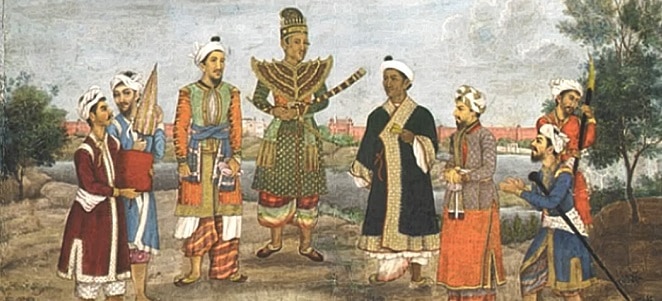
myCBSEguide App
Download the app to get CBSE Sample Papers 2023-24, NCERT Solutions (Revised), Most Important Questions, Previous Year Question Bank, Mock Tests, and Detailed Notes.
Install NowCBSE has omitted the section 4.1 about Caste Conflict and Dress Change under the theme 8 “Clothing: A Social History” given at page no. 168 in the textbook -India and the Contemporary World-I for Class 9 History syllabus published by NCERT for session 2016-2017. No question will be asked from this section in March 2017 examination.
CBSE issued a circular on Monday 19th December 2016 (Circular No. Acad-48/2016) informing all the schools that no question will be asked from this section in Class 9 History syllabus. It seems that the content given under this section is not appropriate.

What is given in section 4.1 (page 168)
Here is the complete text that has been omitted by CBSE in Class 9 History syllabus and no question will be asked from this section in SA-2 exam.
4.1 Caste Conflict and Dress Change
Though there were no formal sumptuary laws as in Europe, India had its own strict social codes of food and dress. The caste system clearly defined what subordinate and dominant caste Hindus should wear, eat, etc., and these codes had the force of law. Changes in clothing styles that threatened these norms therefore often created violent social reactions.
In May 1822, women of the Shanar caste were attacked by Nairs in public places in the southern princely state of Travancore, for wearing a cloth across their upper bodies. Over subsequent decades, a violent conflict over dress codes ensued.
The Shanars (later known as Nadars), many of whom were considered a ‘subordinate caste’ and so were generally prohibited from using umbrellas and wearing shoes or golden ornaments. Men and women were also expected to follow the local custom of never covering their upper bodies before the dominant castes.
Under the influence of Christian missionaries, Shanar women converts began in the 1820s to wear tailored blouses and cloths to cover themselves like the dominant castes. Hindu reformers such as Ayya Vaikunder also participated in dress reform. Soon Nairs, one of the dominant castes of the region, attacked these women in public places and tore off their upper cloths. Complaints were also filed in court against this dress change, especially since Shanars were also refusing to render free labour for the dominant castes.
At first, the Government of Travancore issued a proclamation in 1829 ordering Shanar women ‘to abstain in future from covering the upper parts of the body.’ But this did not prevent Shanar Christian women, and even Shanar Hindus, from adopting the blouse and upper cloth.
The abolition of slavery in Travancore in 1855 led to even more frustration among the dominant castes who felt they were losing control. In October 1859, riots broke out as Shanar women were attacked in the marketplace and stripped of their upper cloths. Houses were looted and chapels burned. Finally, the government issued another proclamation permitting Shanar women, whether Christian or Hindu, to wear a jacket, or cover their upper bodies ‘in any manner whatever, but not like the women of high caste’.
The term Nadar came to be used for all Shanars by the time of the 1921 census. Try and find out more about reformers of the time, such as Ayya Vaikunder, who were engaged in dress and wider social reforms.
The whole text given in page no.168 under section 4.1 seems discriminatory against women and lower caste. The question is whether our children should know about these ill practices or not. Should we hide such facts or should we openly discuss them in the classroom.

Test Generator
Create question paper PDF and online tests with your own name & logo in minutes.
Create Now
myCBSEguide
Question Bank, Mock Tests, Exam Papers, NCERT Solutions, Sample Papers, Notes
Install Now